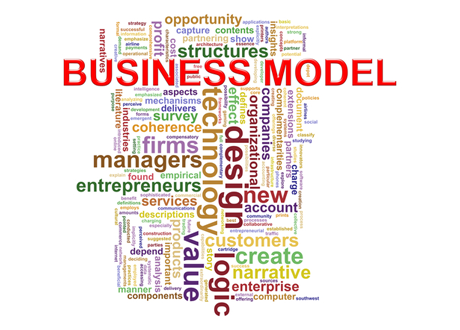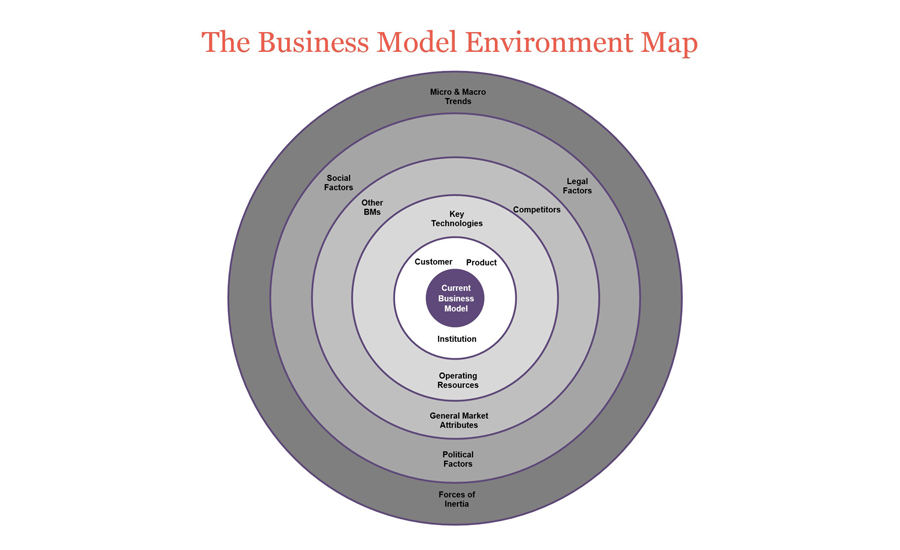By: Georg Stampfl
Leading CEOs worldwide expect major changes to their company’s business model until 2020. As a consequence, organizations are currently about to realize that, today, business model innovation has become as important as technological innovation. However, developing new and viable business models still represents a serious challenge for large incumbent firms despite their resources, know-how, and key technologies. This article provides 10 guidelines for mastering business model innovation challenges in established companies.
We have conducted extensive empirical research on business model innovation processes in incumbent firms and condensed our experiences in working with established companies on developing new business models. Based on these findings the – what we call – “anatomy of business model innovation” has emerged. Besides other insights, it provides 10 important guidelines that need to be considered when tackling the business model innovation challenge.
1. Business model innovation is a top management issue
Business model innovations requires a top-down approach. Top management involvement and support are prerequisites for success. However, this type of innovation represents a significant challenge for business leaders as they have to:
- show strategic foresight and a long term perspective,
- manage the process of organizational change and development of new organizational structures required by new business models,
- promote new business models internally and externally,
- strengthen a supporting corporate culture,
- support employees in taking initiatives and risks,
- handle the ambidextrous operation of the existing and the new model in parallel, and
secure sufficient funding and investments required for the development of new business models.
2. Proactive discovery of new business models
In times of fast changing business environments, incumbent organizations seem to be well advised to proactively search and discover new business model opportunities while their current business model is still successful. Industry boundaries are increasingly blurring and business models far from being stable anymore. As companies are more familiar with product and process innovations, existing organizational abilities and investments might become “rigidities” in moving towards the development of a new business model.
3. Monitoring of business model environments
It is of great importance to implement a structured approach for monitoring business model environments and to provide answers to questions such as:
- What are other business models in the market and how are they changing?
- What are the business models of suppliers, customers, competitors and how are they changing?
- What business models in adjacent markets are emerging?
- What key trends and macroeconomic forces are shaping the business model environment?
It is vital to understand external forces of change in order to anticipate relevant impacts in the business model design. We have developed the “Business Model Environment Map” and the “Business Model Environment Framework” as a structured approach for general environment and trend assessments as well as for the analysis of the links between a specific business model and its environment. Executives and innovation managers are well advised to use available tools to identify business model innovation opportunities in a more structured way.
4. Focus on organizational learning and on an iterative approach
Business model innovation processes show specific characteristics that make them costly and complex. Business model innovation projects are characterized by a high degree of various uncertainties (e.g., regarding markets, customer needs, or technologies). Markets are ill-defined, as is the evolving offer which makes it quite impossible to predict project outcomes. Therefore, the focus must lie rather on organizational learning based on an iterative approach for finding a successful business model design than on efficiency. An experimental instead of a purely analytical logic is required. Strategically relevant and promising opportunities build the playground for an iterative approximation towards a first fit between new business model prototype and market. Hence, classic linear innovation processes (e.g., stage-gate models) are not well suited to develop new business models.
5. New organizational capabilities and structures
The development and implementation of a new business model entails the development of new organizational capabilities and structures as well as the establishment of relationships to new suppliers, customers or other business partners. Important decisions on how to handle the simultaneous operation of the existing business model(s) and the new model need to be taken. It also imposes the challenge to find out how a market can be entered the most effective and efficient way. Learning to “speak the language of the (new) market” is key in this respect.
6. Failure is the rule, not the exception
Even for an experienced business model innovator, failure during a business model innovation process is the rule, not the exception.
Research data shows that even for an experienced business model innovator, failure during a business model innovation process is the rule, not the exception. Success is not around the corner. Incumbents have to accept that a new business model is likely to remain unprofitable for a longer period. Increasing the pressure on the new business model by wrongly applying existing KPIs from established businesses units is dangerous and likely to kill the new business model project too early. The process is not completed with the implementation of a first viable version of the new model. Constant adjustments to the business model are required in order account for heterogeneous customer needs and changing business environments.
7. Supporting the collaboration in business model design projects
In various business model design projects it became evident that – despite all modern communication technologies – face-to-face meetings are most effective in putting ideas forward. However, the abundance of information that has to be processed throughout business model development calls for technological support. Collaboration needs to be supported by
- a platform for process management allowing to document the design process, to organize work, to report on completed tasks, and to communicate quickly (e.g., giving immediate feedback to spontaneous ideas), and by
- a knowledge repository where new information is collected, refined, and easily shared with others.
8. The use of templates – clearly outline underlying hypotheses
The use of visual business model templates to design business models helps to provide structure, a shared language, and simplification. Moreover, it allows to concentrate on the essential components of the business model. However, it must be noted that the downside of templates is limited creativity and the template itself might need more specification. Still, templates are useful to develop ideas for new business models into full business model prototypes. Such prototypes represent an accumulation of various hypotheses, for instance regarding customers, markets, or the business model’s economics that need to be clearly outlined. Clearly stating the hypotheses makes the assumptions underlying the business model prototype more tangible and testable.
9. Use of business model analogies to learn from proven patterns
Analogies are an important catalyst for generating new business model ideas.
Analogies are an important catalyst for generating new business model ideas. Being inspired by proven business models from other domains sparks creativity, helps do generate new business model designs, and, by building on proven elements of other business models, the pitfalls of a particular business model pattern can be anticipated. Hence, it is advisable to capitalize on the fact that (1) most “new” business models are not completely new, but rather adaptions or refinements of existing business models (Stampfl 2015; Gassmann, Csik, et al. 2012) and (2) that business model patterns are successfully applicable across industry boundaries. As a consequence, we decided to develop a knowledge-hub on business models (the “Business Model Gallery”) as a resource for learning about various business models from different industries. A catalogue of “business model design themes” allows to “borrow” ideas for own business model design tasks.
10. Expect (positive) “side effects”
Last but not least, chances are high that there are (positive) “side effects” of developing new business models. The development of new products frequently represents a primary trigger for developing new business models. However, the work on a new business model might result in important inputs and new ideas for product development. As there is a strong interplay between product and business model innovation, the development of a new product can be a positive side effect (i.e. a result) of business model innovation. Vice versa, the work on a new business model often provides inputs and new ideas for new products or improved processes.
Let’s keep this list of guidelines going! What are your experiences and learnings from business model innovation projects in a larger company? Post your comments, thoughts and feedback below or get in touch with me.
By Dr. Georg Stampfl
About the author
 Georg Stampfl is passionate about discovering new business opportunities. Combining sensitivity to trends and entrepreneurial spirit, he loves to create new business concepts. He has worked as a consultant with companies ranging from Internet startups to publicly traded companies on strategy, innovation and business model projects. In his doctoral dissertation he investigated business model innovation processes in incumbent firms. Georg has published various articles in the field of business model research. Georg is co-founder of Business Model Gallery the world’s first and largest public business model database – a knowledge-hub on business model design & innovation. Moreover Georg is co-founder of The Premium Pure, a consultancy focusing on strategic innovation.
Georg Stampfl is passionate about discovering new business opportunities. Combining sensitivity to trends and entrepreneurial spirit, he loves to create new business concepts. He has worked as a consultant with companies ranging from Internet startups to publicly traded companies on strategy, innovation and business model projects. In his doctoral dissertation he investigated business model innovation processes in incumbent firms. Georg has published various articles in the field of business model research. Georg is co-founder of Business Model Gallery the world’s first and largest public business model database – a knowledge-hub on business model design & innovation. Moreover Georg is co-founder of The Premium Pure, a consultancy focusing on strategic innovation.
Resources:
- Gassmann, O., Csik, M., & Frankenberger, K. (2012). Aus alt mach neu: Ein Fahrplan für Innovationen. Harvard Business Manager, 34.
- Stampfl, G. (2015). The Process of Business Model Innovation. Springer Gabler, forthcoming Summer 2015
Photo: Business Model by Shutterstock.com



